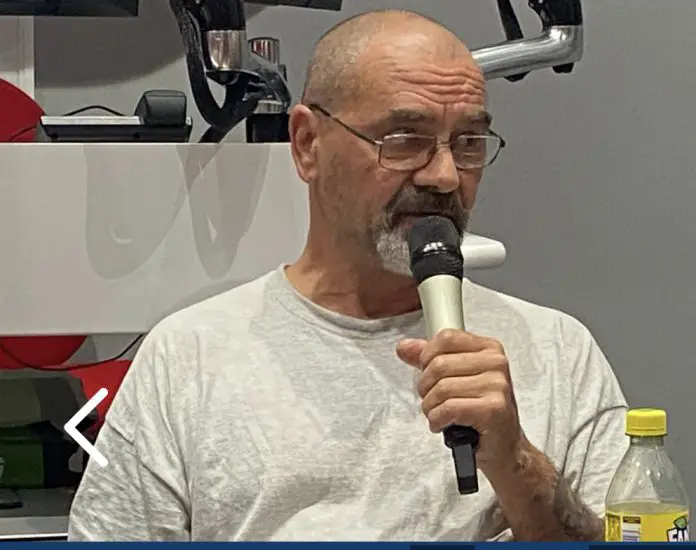Andrew Malkinson joined the charity Appeal last night to launch a report exposing the ‘explicit racist & classist’ reasons majority verdicts in courts were invented.
Malkinson spent over 17 years in prison for a rape in Greater Manchester that he did not commit
Greater Manchester Police have since apologise to Mr
The justice charity claims it found majority verdicts were introduced in 1967 for “racist and classist” reasons and have since contributed to dozens of miscarriages of justice including that of Malkinson
The principle of jury unanimity – which insists that all 12 jurors must agree before a criminal conviction can be secured – had been a hallmark of the criminal justice system for hundreds of years until then Home Secretary Roy Jenkins championed the change.
The purported reason was around concerns of juror “nobbling” (corruption and bribery of jurors) although the researchers found little evidence that this issue was a widespread issue.
Documents uncovered by Nisha Waller – APPEAL’s Racial Justice Lead and Naima Sakande – APPEAL’s former Deputy Director – showed that majority verdicts were, at least in some part, introduced based on a desire to dilute the influence of “coloured” migrants and the new “labouring class”. The narrative unfolds against concerns of a more diverse jury pool, which some commentators felt diluted the “calibre” and educational ability of jurors.
The report draws parallels with these findings and those of the landmark case in the Unites States, Ramos v Louisiana [2020] that outlawed majority verdicts amid recognition of their racially prejudices origins, including evidence that majority verdicts were introduced in Louisiana in 1898 to suppress the votes of black jurors following the abolition of slavery.
In England and Wales it is impossible to determine whether the votes of racialised minority and working-class jurors are more likely to be excluded in a majority decision, or whether majority verdicts are more common in wrongful conviction cases. Restrictions set out in section 8 of the Contempt of Court Act 1981 prohibit anyone from seeking information on what goes on in the jury room. The report find these restrictions to be an “enormous impediment” to the study of the impact of majority verdicts in real cases.
Despite a paucity of data on majority verdicts, when considering the picture today, the authors found that more than 1,100 Crown Court convictions are by a majority jury verdict each year.
The charity has identified dozens of high-profile wrongful convictions based on majority jury verdicts, which are set out in the report. This includes APPEAL’s client, Andrew Malkinson, who was recently exonerated after spending 17 years in prison, and Winston Trew, who was “fitted up” by a racist police officer in 1972.
Both these men were interviewed as part of the study, along with Dr David Sellu, who was wrongfully convicted of gross negligence manslaughter in 2013 on a 10/2 majority, and Kevin Lane, who was convicted of murder in 1996 on a 10/2 majority, and whose conviction was upheld in 2015 despite fresh evidence of police corruption.







